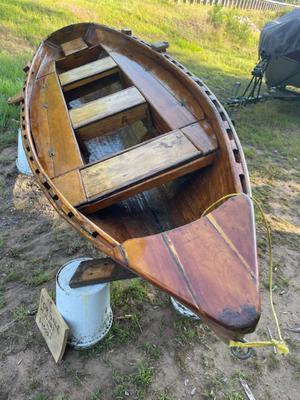- Home
- Your Boats
- Wooden Boat Women
- Where to start....1956 Century Resorter 16 ft
Where to start....1956 Century Resorter 16 ft
by Tamsen
(Nevada)

I just bought a 1956 Century Resorter.
Great interior, solid bottom, but I really want to refinish the hull.
Her deck has teak and the usual white caulking, which needs to be touched up.
Where do I start to remove the existing varnish and stain, and do I use a product or orbital sander to get down to the original wood?
Am I looking at the process in the correct stages?
The bottom solid and is painted with antifouling and will probably get another coat of the copper/bronze antifouling because I like the look it gives the red in the mahogany.
Here is a pic of the old gal, "Savvy?"
Thanks in advance for the help.
Tamsen (Im a single girl with a soft spot for wood boats, had plenty of fibreglass.)
Comments for Where to start....1956 Century Resorter 16 ft
|
||
|
||
|
||
|
||
|
||
|
||
|
||
|
||
|
||
|
||
|
||
|
||
|
||
Want to add more photos?
Photo Uploader
If you are having problems uploading Photos or would like to add more click on this link for the Upload Form.







